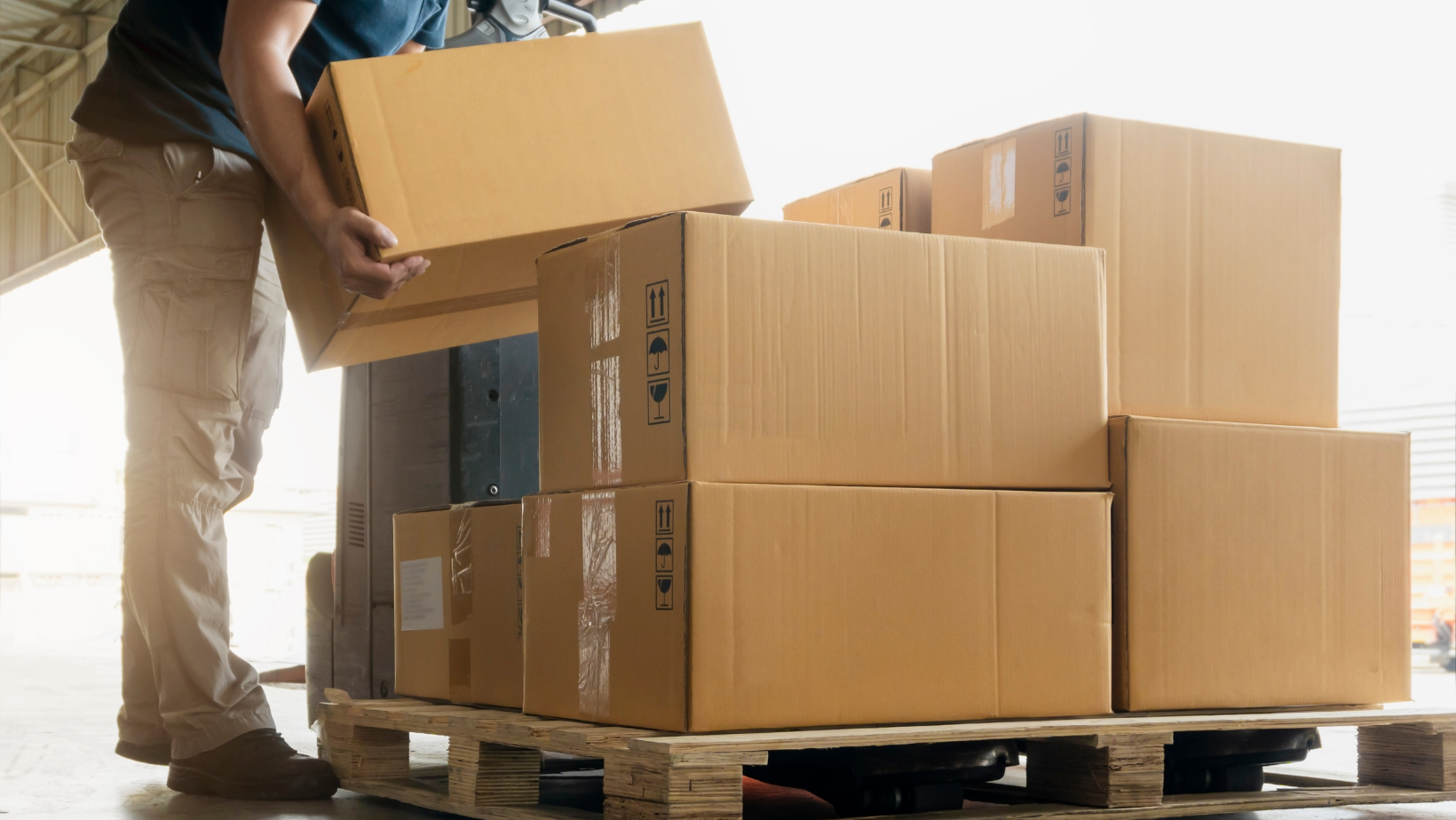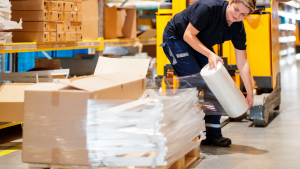Loading a Pallet
Efficiently loading a pallet is crucial when it comes to using same-day courier services. A well-organised and properly loaded pallet ensures the safety of the goods being transported, maximises space, and minimises the risk of damage during transit. In this blog post, we will guide you through the process of properly loading a pallet to ensure a smooth and successful delivery
How to Load a Pallet:
- Gather the necessary supplies: Before you begin loading a pallet, gather all the essential supplies. These typically include a sturdy pallet, cardboard or plastic corner protectors, shrink wrap or stretch film, packing tape, and labels. Having these items readily available will make the loading process a lot easier.
- Choose the right pallet: Ensure that the pallet you select is in good condition and suitable for the size and weight of your shipment. Opt for pallets that are structurally sound, without any broken or missing boards. It’s also important to consider the dimensions of the pallet, as well as any weight restrictions for your required vehicle. If you are unsure about size or weight restrictions, take a look at our handy Vehicle Guide
- Organise and sort your goods: Before loading, carefully organise and sort your shipment. Group similar items together and consider the fragility and weight of each item. This step will help you determine the most efficient way to load the pallet.
- Use Corner Protectors: To protect your shipment from damage during handling and transportation, use cardboard or plastic corner protectors. These add an extra layer of protection to the edges and corners of your goods, minimising the risk of impact-related damage.
- Stack the heaviest items first: When loading a pallet, start by placing the heaviest and most stable items on the bottom layer. This provides a solid foundation for the rest of the shipment. Distribute the weight evenly across the pallet to maintain balance and stability. When stacking ensure that you do not stack the items too high as this will offset the centre of balance, also ensure you are not stacking above the height restrictions for your selected vehicle.
- Fill empty spaces: Efficiently utilise the available space on the pallet by filling any gaps or voids between items. Use appropriate packaging materials, such as bubble wrap or packing peanuts, to fill these empty spaces. This prevents the items from shifting during transit, reducing the likelihood of damage.
- Consider fragile items: For fragile items, it’s crucial to provide adequate protection. Wrap each fragile item individually with bubble wrap or foam cushioning, securing it with packing tape. Place these items in the centre of the pallet, surrounded by cushioning materials, and avoid positioning them near the edges.

- Secure the load: Once the pallet is fully loaded, it’s essential to secure the load using shrink wrap or stretch film. Start at the bottom and work your way up, ensuring the entire shipment is tightly wrapped. Also make sure the load is ‘locked’ to the pallet by extending the wrap onto the pallet itself; this helps to keep the items in place during transportation and minimises the risk of items shifting or falling off the pallet.
- Labelling and documentation: To ensure proper identification and handling, attach clear and visible labels to the pallet. Include information such as the delivery address, contact details, and any specific instructions for the courier, e.g. must be kept upright or fragile. Additionally, keep all relevant documentation, such as invoices or waybills, readily accessible.
Properly loading a pallet for same-day courier services is a critical step in ensuring the safe and efficient transportation of goods. By following the guidelines outlined in this blog post, you can maximise space utilisation, protect your items from damage, and improve the overall success rate of your deliveries. Remember to prioritise safety, balance the weight distribution, and secure the load effectively. With these practices in place, you can trust that your shipments will reach their destinations on time and in pristine condition. For tips on loading Vans, take a look at this blog on our sister site!

